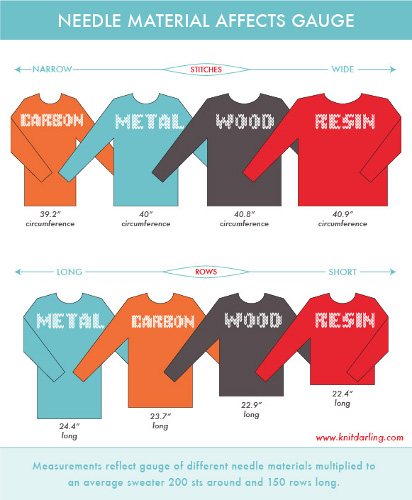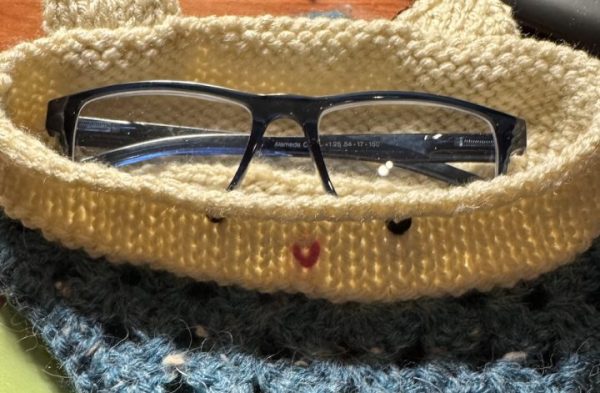 I’m really interested in this bit of knitting geekery from Knit Darling, which is about knitting needle materials and how different needles — even those labeled as being the same size — can give you different gauge results.
I’m really interested in this bit of knitting geekery from Knit Darling, which is about knitting needle materials and how different needles — even those labeled as being the same size — can give you different gauge results.
She knit up swatches of the same number of stitches and rows on four different kinds of needles, using the same kind of yarn. After blocking, she measured them and extrapolated what size sweater you would get if you knit to that gauge for 200 stitches.
She discovered a difference of as much as two inches between two different kinds of needles (with carbon needles coming out the smallest and resin the biggest in her test).
The takeaway here is that different needles perform differently, even when they’re labeled the same size. So if you don’t already do so, make sure you knit your swatch and your project with the exact same needles, not just the same size. Also knit circular swatches for projects that will be worked in the round; she found a sweater knit with the same number of stitches would be 1.5 inches narrower worked in the round rather than flat. Which just goes to show that knitting is a lot more precise than we usually give it credit for.
[Photo via Knit Darling.]

This is a very necessary thing to know. I have been designing & making a blanket for a charity & decided to use different techniques as in modular block (no sewing), a Motif & mitered corners (more no sew). After knitting the motif it was buckled & even with blocking wouldn’t sit flat. I have now discovered that my purl stitch row was larger than my knit rows. Upon some research I discovered this is not uncommon. I now know that I have to use a smaller needle for a purl row, especially when combining garter & stocking stitch in the one piece. I might add that the needle that eventually gave me the right tension was 2 needle sizes less than the knit row needle. I have also found out that I knit a lot more loosely when using a circular needle. Yes knitting really is a technical past time.